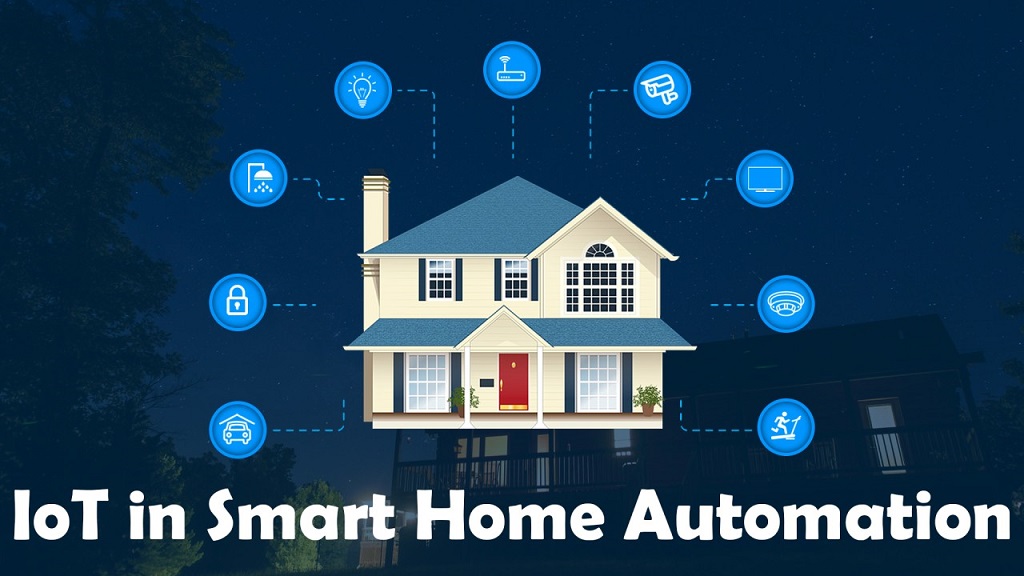Imagine a world where your morning routine unfolds seamlessly. Your smart coffee maker brews a fresh pot as your alarm wakes you, while the smart lights gradually brighten, mimicking a sunrise. As you head out the door, the thermostat automatically adjusts and your connected security system arms itself. This, and much more, is the promise of the Internet of Things (IoT) revolutionizing our homes within the next five years.
The IoT refers to the ever-growing network of everyday devices embedded with sensors and software, allowing them to connect with the internet and exchange data. This interconnected ecosystem is poised to fundamentally alter how we manage our homes, enhancing comfort, security, and efficiency.
A Glimpse into the Smart Home of Tomorrow
Let’s delve into some specific ways the IoT is likely to transform our homes in the next five years:
- Hyper-Personalization: IoT devices will gather data on our habits and preferences, personalizing the home environment. Imagine smart thermostats learning your ideal temperature settings or lighting systems that adjust based on your mood or activity.
- Enhanced Security and Automation: Smart locks, doorbells with built-in cameras, and motion sensors will work together to create a comprehensive security system. Additionally, automated routines will allow you to control lights, appliances, and thermostats remotely, offering peace of mind and convenience.
- Improved Energy Efficiency: Smart appliances will learn your usage patterns and adjust settings accordingly. Intelligent thermostats can automatically lower temperatures when you’re away, while smart plugs can monitor and control the energy consumption of electronics.
- Water Management: Leak sensors placed around the house can detect potential problems before they cause major damage. Additionally, smart irrigation systems can optimize water use in your garden, conserving resources.
- Voice Control Takes Center Stage: Virtual assistants like Alexa and Google Assistant will become even more integrated into our lives. Imagine controlling lights, adjusting thermostats, or even ordering groceries through simple voice commands.
Beyond Convenience: Additional Benefits and Considerations
The benefits of an IoT-powered home extend beyond convenience:
- Accessibility for All: IoT devices can provide valuable assistance for people with disabilities, allowing them to control aspects of their home environment with greater ease.
- Improved Air Quality: Smart air purifiers can monitor air quality levels and automatically adjust settings to maintain a healthy environment.
- Remote Monitoring: Imagine checking in on your home remotely, ensuring everything is functioning properly, or receiving alerts if there’s a potential issue.
However, there are also considerations to keep in mind:
- Security and Privacy Concerns: As our homes become more interconnected, concerns about data security and privacy become paramount. Choosing devices with robust security features and being mindful of the data collected will be crucial.
- Interoperability Challenges: Not all devices work seamlessly together. Standardization and compatibility will be essential for creating a truly integrated smart home ecosystem.
- The Cost Factor: While the cost of IoT devices is steadily decreasing, outfitting an entire home can still be expensive. Prioritizing functionalities that add the most value to your life will be key.

The Next Five Years: A Connected Future
Several emerging trends are poised to accelerate the transformation of our homes in the next five years:
- Rise of Cellular Connectivity: While Wi-Fi is currently the primary means of connecting devices, the rise of cellular-based IoT is expected to provide more reliable and secure connections even during power outages.
- Focus on Artificial Intelligence (AI): AI will play a more prominent role in smart homes, enabling devices to learn, adapt, and anticipate our needs.
- Increased Focus on Wellbeing: IoT devices will be used to monitor our health and well-being. Imagine smart mats tracking sleep patterns or sensors monitoring air quality to optimize our sleep environment.
Related: What is the Difference Between Technology and Digital Technology
Conclusion: Embracing the Connected Home
The future of our homes lies in a world seamlessly integrated with technology. While challenges like security and cost remain, the benefits of convenience, efficiency, and enhanced well-being are undeniable. As we move towards a more connected future, it’s important to approach the IoT revolution with a critical eye, prioritizing functionality, security features, and responsible data practices. By adopting this approach, we can harness the power of the IoT to create smart homes that truly enhance our lives.
Here are some additional points to consider:
- Start Small: You don’t have to overhaul your entire home at once. Start with a few key devices that address your specific needs and gradually build your smart home ecosystem.
- Do Your Research: Read reviews, compare features, and consider security measures before purchasing any IoT device.
- The Future is Collaborative: Tech giants, startups, and academic institutions all play a role in shaping the future of the IoT. Collaboration between these entities will be crucial for developing secure, affordable, and user-friendly technology that benefits everyone.
The transformation of our homes through the Internet of Things holds immense potential. Imagine a future where our homes adapt to our needs, anticipate our routines, and seamlessly integrate with our lives. While challenges exist, by embracing innovation responsibly and prioritizing security and user control, we can create a future where technology empowers us to live more comfortably, efficiently, and sustainably within the walls of our smart homes. So, keep an eye on the evolving landscape of the IoT, and get ready to experience the exciting possibilities that await in the connected home of tomorrow.

